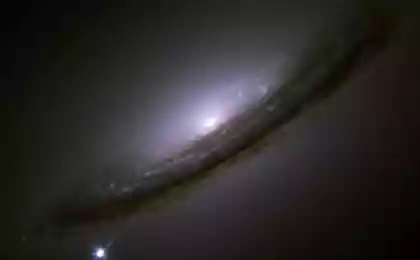170
There may be 11 billion-year-old life in our galaxy

"We know that Earth-like planets formed throughout most of the universe's 13.8 billion-year history, which certainly provided the conditions for the creation of ancient life in our galaxy," said Thiago Campante, a scientist at the University of Birmingham. Curiously, an ancient system of Earth-like planets formed at the very beginning of the universe when it was five times younger. Kepler-444 is two and a half times older than our solar system, which is only 4.5 billion years old. This tells us that planets of this size have formed throughout the history of the universe, and we need to understand when exactly this began to occur.”
This sun-like star with planets in orbit, born at the dawn of the galaxy, was discovered by an international team of astronomers. Being 11.2 billion years old and possessing planets, it confirms the view that similar planets formed throughout the history of the Universe.
This discovery was first reported a few days ago by the Astrophysical Journal, using data from NASA’s Kepler satellite. The community of scientists consisted of employees of the University of Birmingham and the University of Sydney.
The star, dubbed Kepler-444, contains five planets slightly smaller than Earth, whose sizes range from Mercury to Venus.
“We’ve never seen anything like this — such an old star, and so many small planets in its orbit,” said Daniel Huber, one of the authors of the study.
Together with their foreign colleagues, the team determined the age of stars and planets. They used a method of measuring oscillations — the natural resonance of a star that creates sound waves captured by the star.
They cause minute changes or pulses in the brightness of a star and allow scientists to measure the diameter, mass, and age of a star. The presence and sizes of planets are revealed by the dimming that occurs when a planet passes in front of a star. This drop in the luminosity of the planet allows, in turn, to accurately measure the size of the planet relative to the size of the star.
When astroseismology first appeared for about two decades, we could use its methods on the Sun and a few bright stars, but thanks to Kepler, we can now apply them to thousands of other stars. Astroseismology allows us to accurately measure the radius of Kepler-444, and therefore the size of its planets. The radius of the smallest planet in the Kepler-444 system is about 100 kilometers, it is slightly larger than Mercury, says Huber.
“It turned out something unusual early on, as we had five planets orbiting a very bright star — one of the brightest ones Kepler has detected.” It is fantastic that we can use astroseismology to determine the age of a star and other features.
In the case of Kepler-444, the planets orbit the parent star in less than 10 days, at a distance less than ten times that from Earth to the Sun. Proximity to the parent star implies that the planets are uninhabitable because they have no liquid water and very high levels of radiation. However, discoveries like Kepler-444 provide us with important clues that planets more Earth-like may indeed exist. We are one step closer to the holy grail of astronomers – an Earth-like planet with a year-long orbit around a sun-like star.
Source: hi-news.ru
Simple steps to survival in a crisis
Floating Autonomous eco house with a full energy supply by solar energy
























